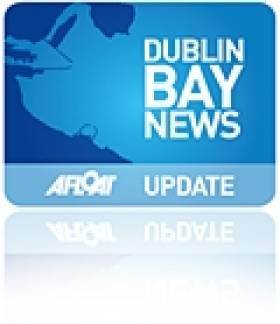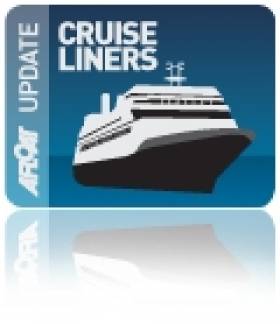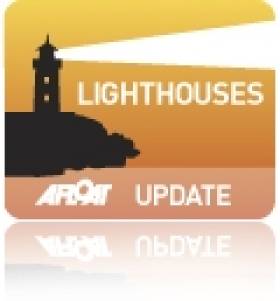Displaying items by tag: Coal Quay
Ships Meet In Dublin Port: Recall Collision in Dublin Bay
As the ro-ro ferry Norcape departed Dublin Port last Monday, on a routine sailing to Liverpool, the vessel passed the docked general dry-cargo bulker Wilson Tana. The vessels were involved in a collision in Dublin Bay, over 20 years ago, writes Jehan Ashmore.
On 18 February 1988 the vessels collided about a mile off the entrance to Dublin Port. The Norcape, was then under different ownership as B+I Line's 6,310grt Tipperary and the 4,694grt Wilson Tana, then named Sumburgh Head was owned by Norwegian shipping company Christian Salvesen.
Several small craft dashed to the scene as part of the rescue effort, fortunately the incident occurred close to the port and without loss of life or injury.
The bow of the Tipperary ruptured one of the Sumburgh Head holds, causing a large gash in hold No. 3 that led to over 3,500 tons of fertiliser spilling into the sea. The vessel was carrying in total 5,000 tonnes of the cargo from Rostock, then in the former East Germany.
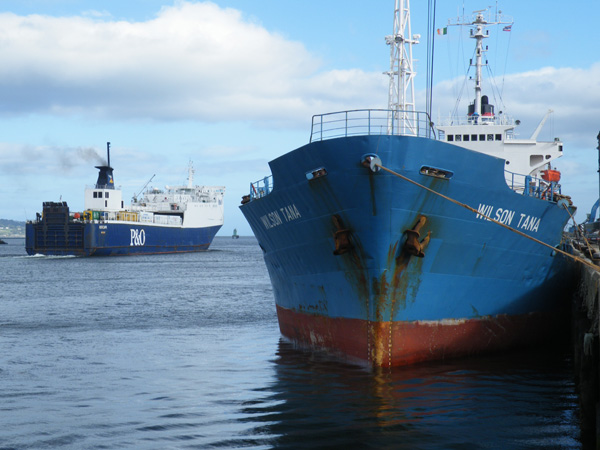
Norcape (formerly B+I Line's Tipperary) and Wilson Tana (formerly Sumburgh Head) in Dublin Port on Monday. Photo J. Ashmore /ShipSNAPS
Also arriving at the scene were tugs to assist the disabled vessels. The Sumburgh Head was in need of more urgent attention having sustained heavy structural damage amidships to one of four cargo holds. Several attempts were made to pull Sumburgh Head free while the Tipperary used her bow thrusters and main engines in an attempt to pull away too.
After an hour the vessels parted, though air-sea rescue services were called as it was feared the Sumburgh Head was in a vulnerable situation. The vessel only developed a 10-degree list and limped into the port under towage. Tipperary was less damaged and managed to return to port under her own power.
Sumburgh Head received remedial attention with metal girders positioned across the gapping damaged hold. In comparison the Tipperary was less damaged except for a gash to the bow and several buckled bulbous bow plates. The ferry received repairs in the local dry-dock facility in Alexandra Basin.
The Sumburgh Head was built in 1977 at the Hashihama Zosen shipyard, Imabari in Japan. Incidentally, Tipperary was also built in Japan by Mitsui Engineering Shipbuilding, Tamano and launched in 1979. The newbuild was chartered to B+I Line to serve on a new Dublin-Fleetwood route jointly operated with P&O, using Tipperary's sister, Ibex.
In 1988, the route's UK port switched to Liverpool with Tipperary remaining on the route until sold to North Sea Ferries in 1989 and renamed Norcape. It is only this year that the vessel returned to Dublin-Liverpool for P&O (Irish Sea) completing a career circle.
As for Wilson Tana, the Maltese flagged bulker docked in Dublin after arriving from Gijon, northern Spain. For the next two days the vessels cargo of sand was unloaded at the Coal Quay before departing last night.
Largest Ever Cruiseship to Dublin Set to Return
During the summer the 290m vessel called to the capital as did one of her sisterships, the slightly smaller Emerald Princes. The 2006 built Italian Crown Princess presented a most impressive sight while in the port but equally when departing in the bay on 13 August at the start of a short leisurely overnight passage to Liverpool.
Crown Princess represents one of several 'Grand'-class generation vessels built for Princess Cruises, a subsidiary of the US-owned cruise clongomerate, Carnival Cruise Corporation, based in Miami. The leadship of the class, Grand Princess made the first cruise-call to Dublin in August 2004.
On that occasion, Grand Princess was the largest cruiseship to dock in Dublin, breaking all records when surpassing the milestone 100,000gt mark. The vessel moored unsually at the Coal Quay, a berth normally reserved for ships trading in scrap-metal. Since then the Grand-class sisters berth in a more central location within the port at Alexandra Basin.
Sitting High and Dry: The Last Lanby
The decommissioned Codling Bank (Lanby) buoy is no longer in the water but rests firmly on a quayside in Dublin Port, writes Jehan Ashmore. In late July the Commissioners of Irish Lights withdrew the Lanby (Large Automated Navigation Buoy) was towed by the tender ILV Granuaile to the Coal Quay where the Lanby was hoisted out of the water.
The Lanby neighbours the adjacant Hammond Lane Company which is due to demolish the structure for scrapping. The removal of the Lanby, the last to serve in Irish waters, completes the withdrawal of Major Floating Aids to Navigation (MFAs) that also consisted of Lightships.
The Lanby was replaced with a Type 1 buoy to mark the Codling Bank offshore of Arklow. The new aids to navigation buoy has a focal in excess of 5-metres is fitted with a racon and Automatic Identification System (AIS).
Apart from loading scrap-metal the Coal Quay is also used by vessels for dry-cargoes trades such as animal feed, re-cycled glass and fertiliser.
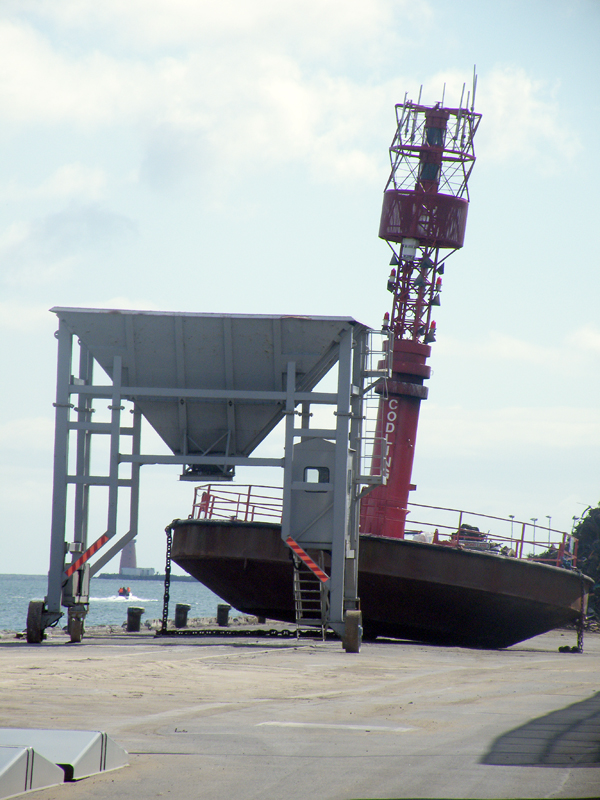
The decommissioned Codling Bank Lanby on the Coal Quay Dublin on 8 August awaiting demolition. Photo: Jehan Ashmore


























